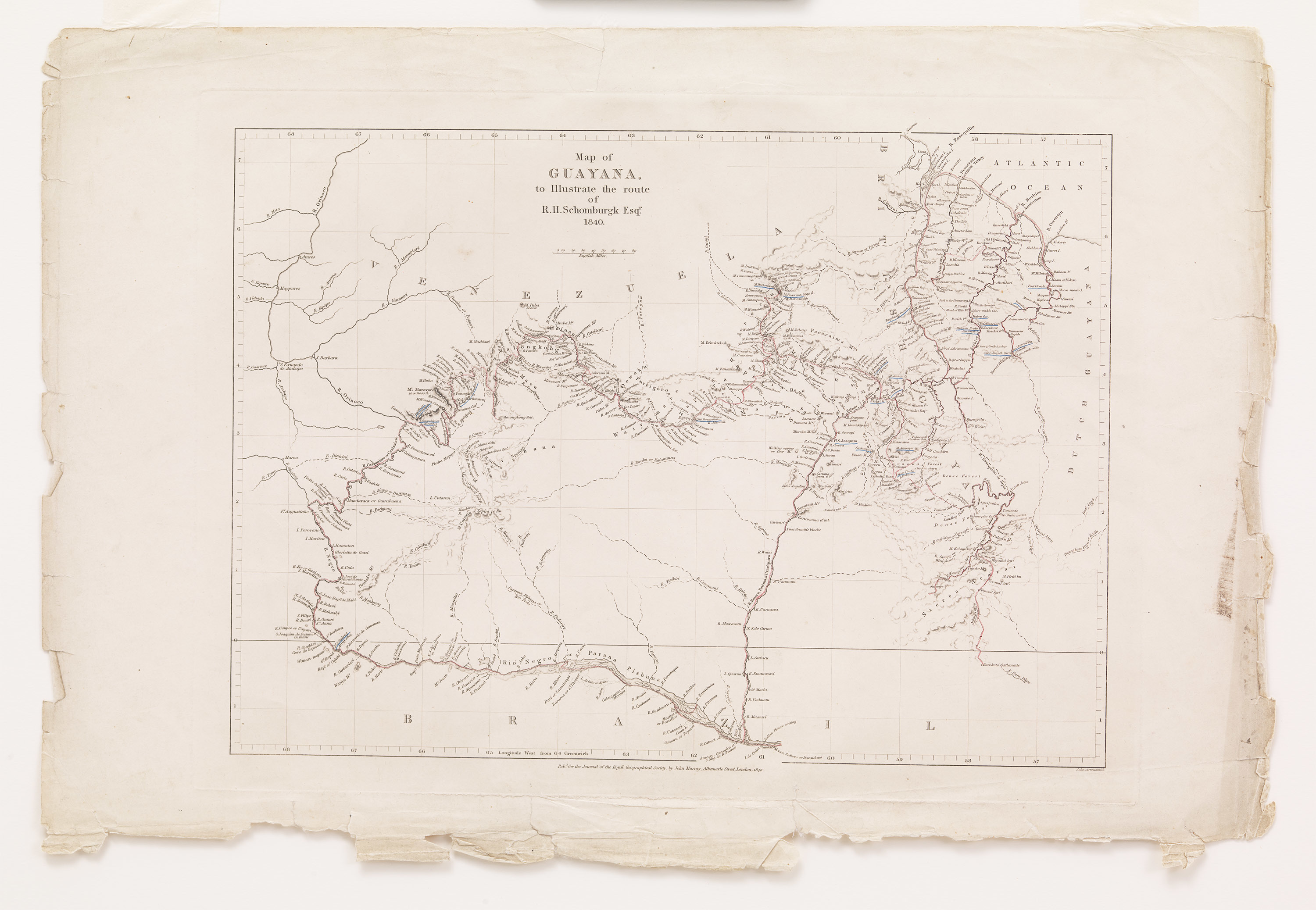
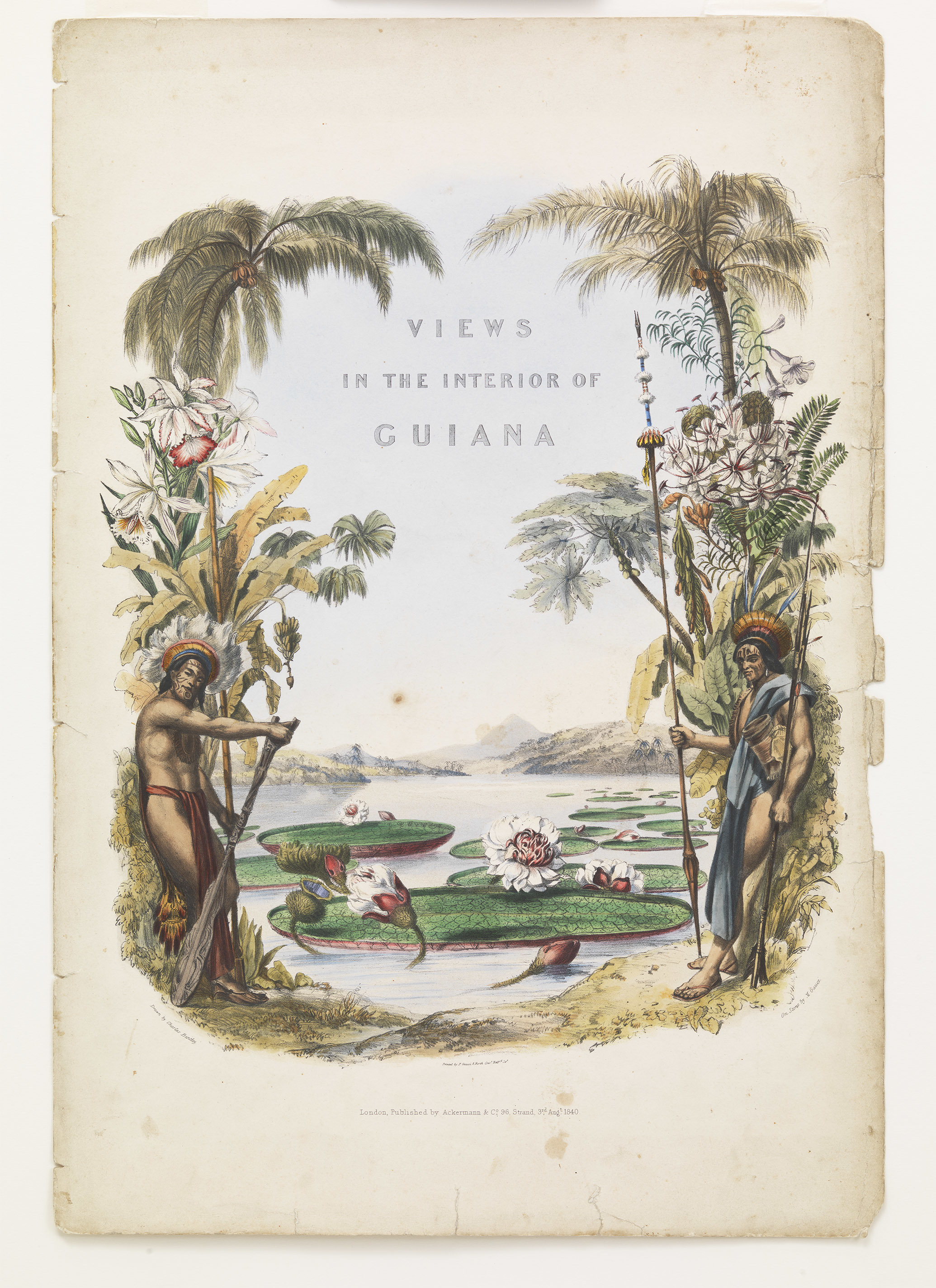
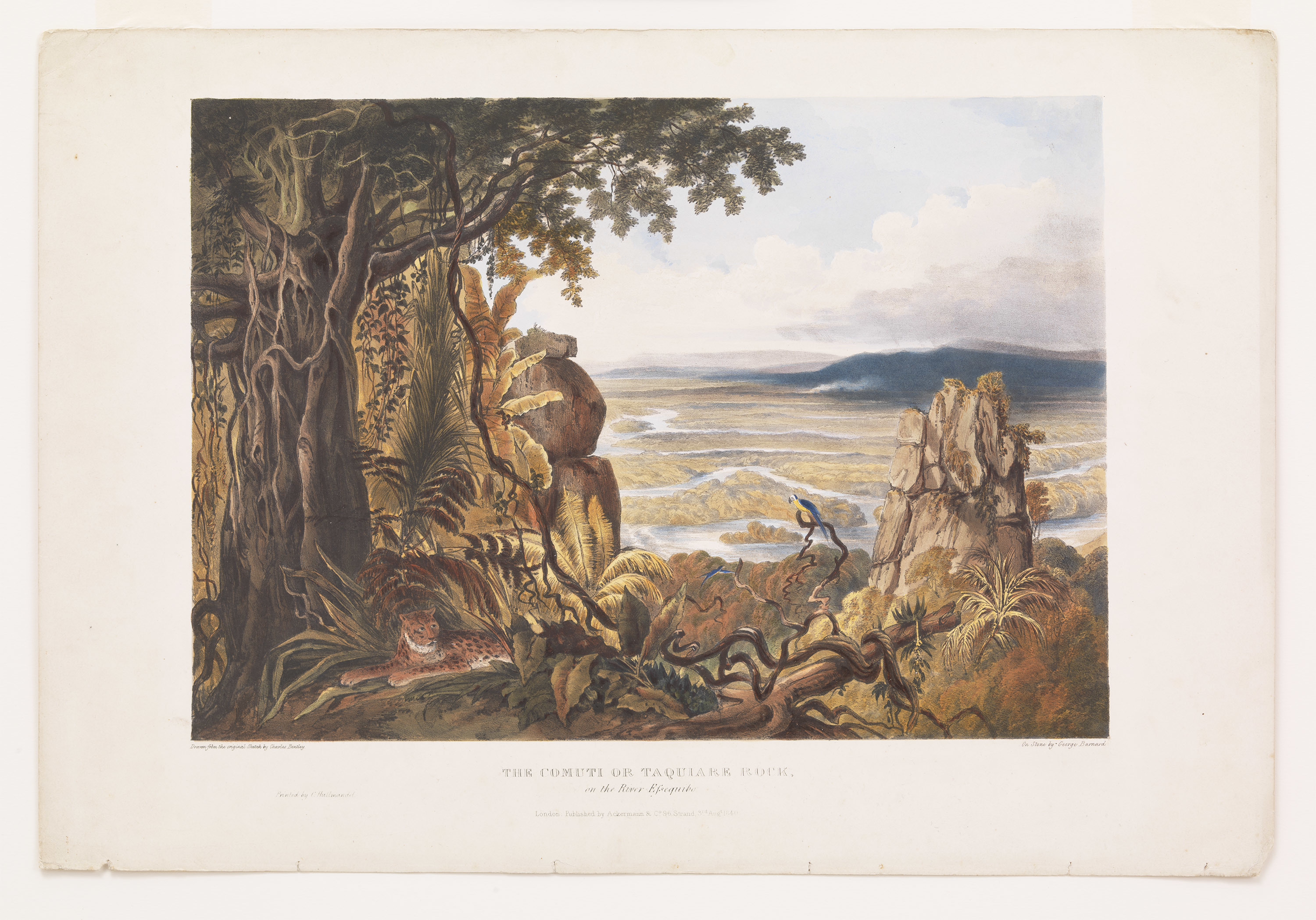
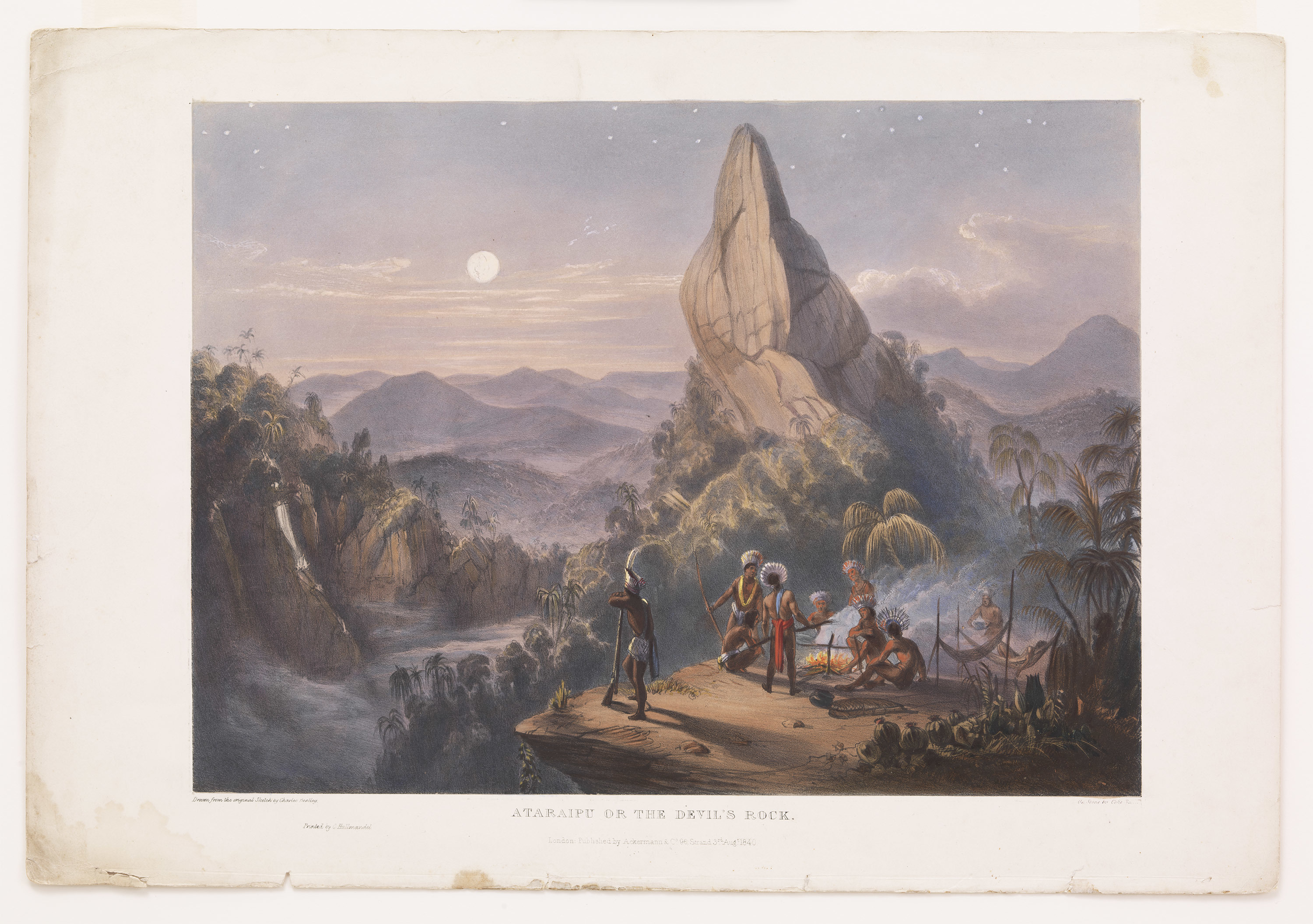
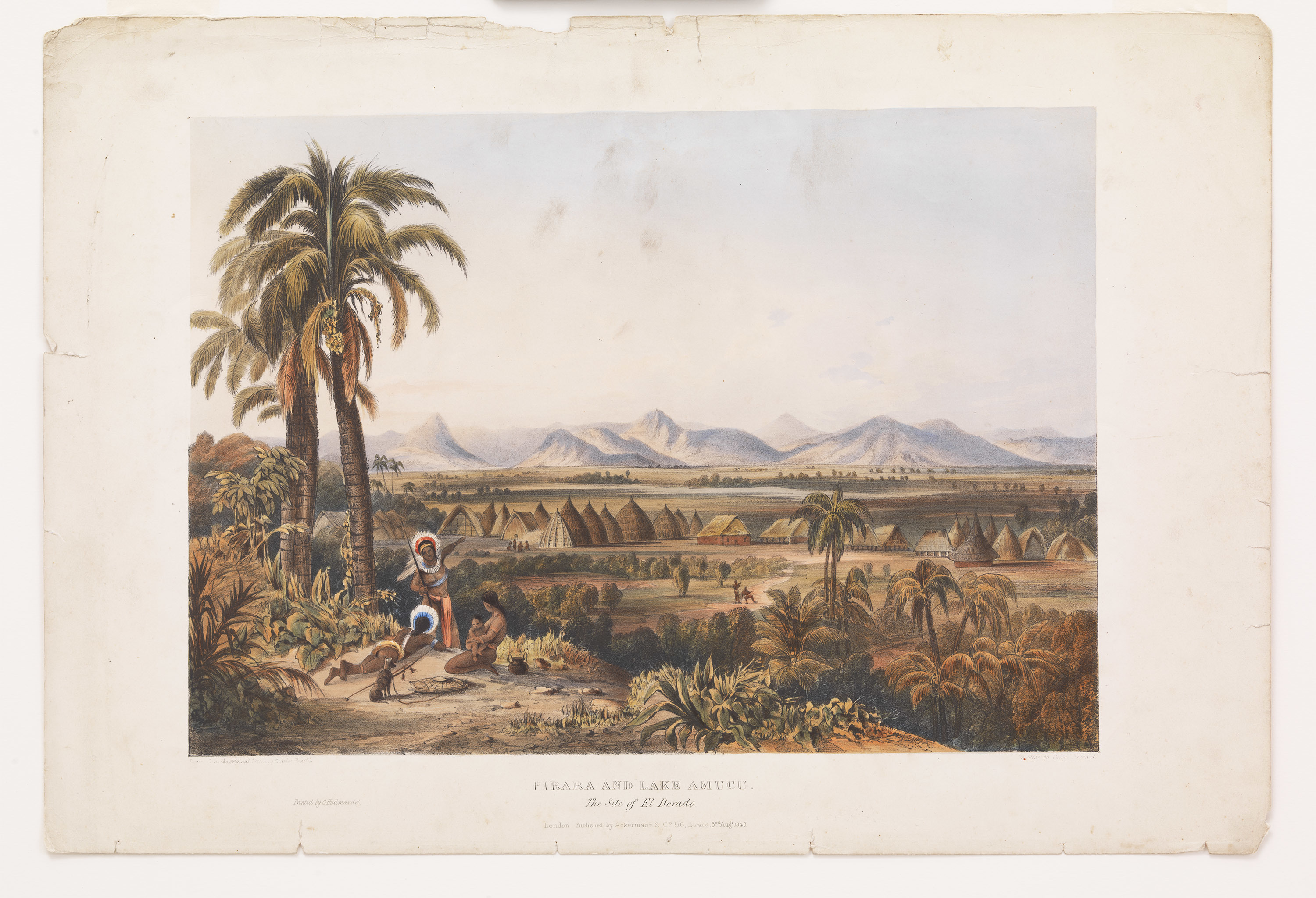
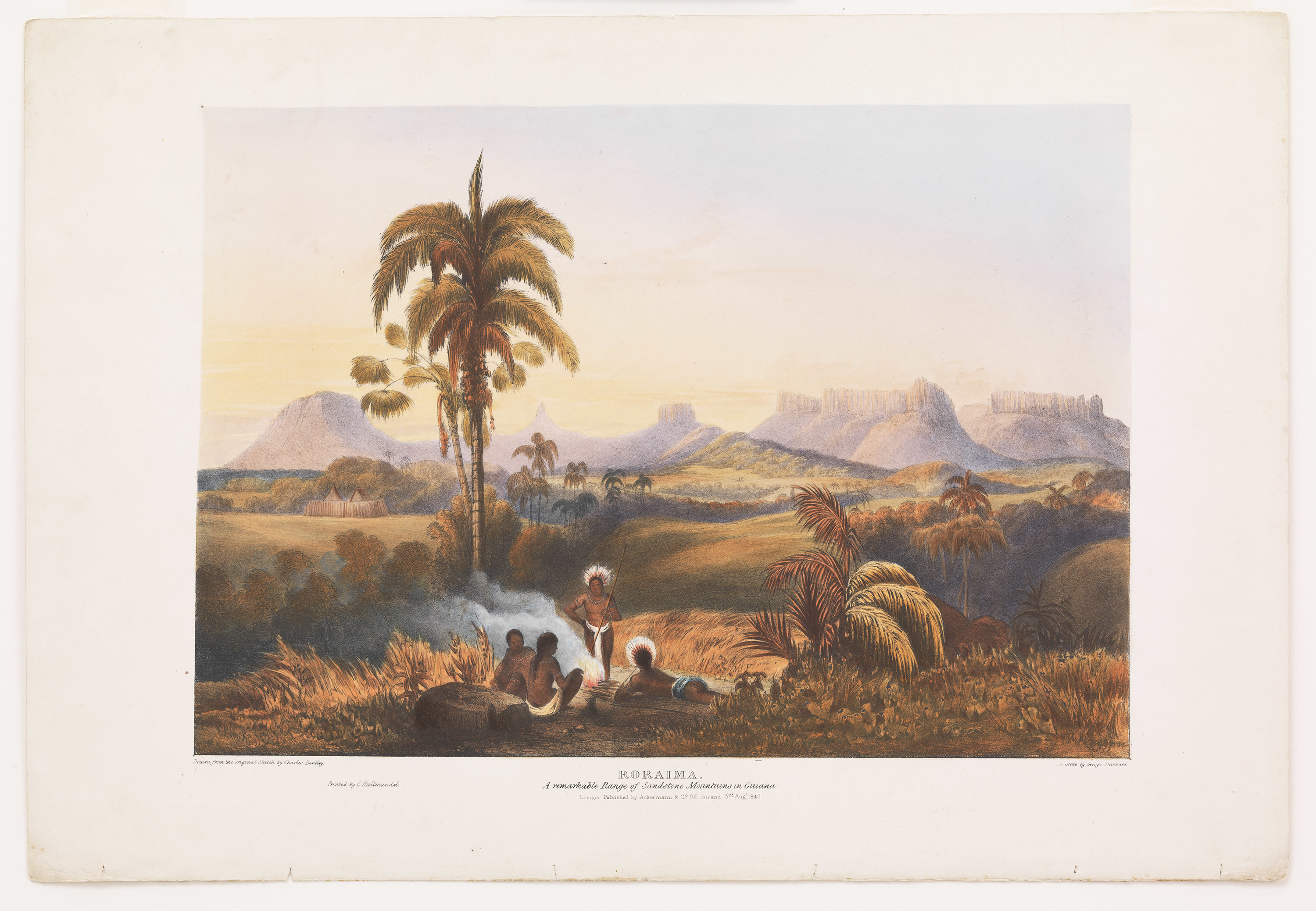

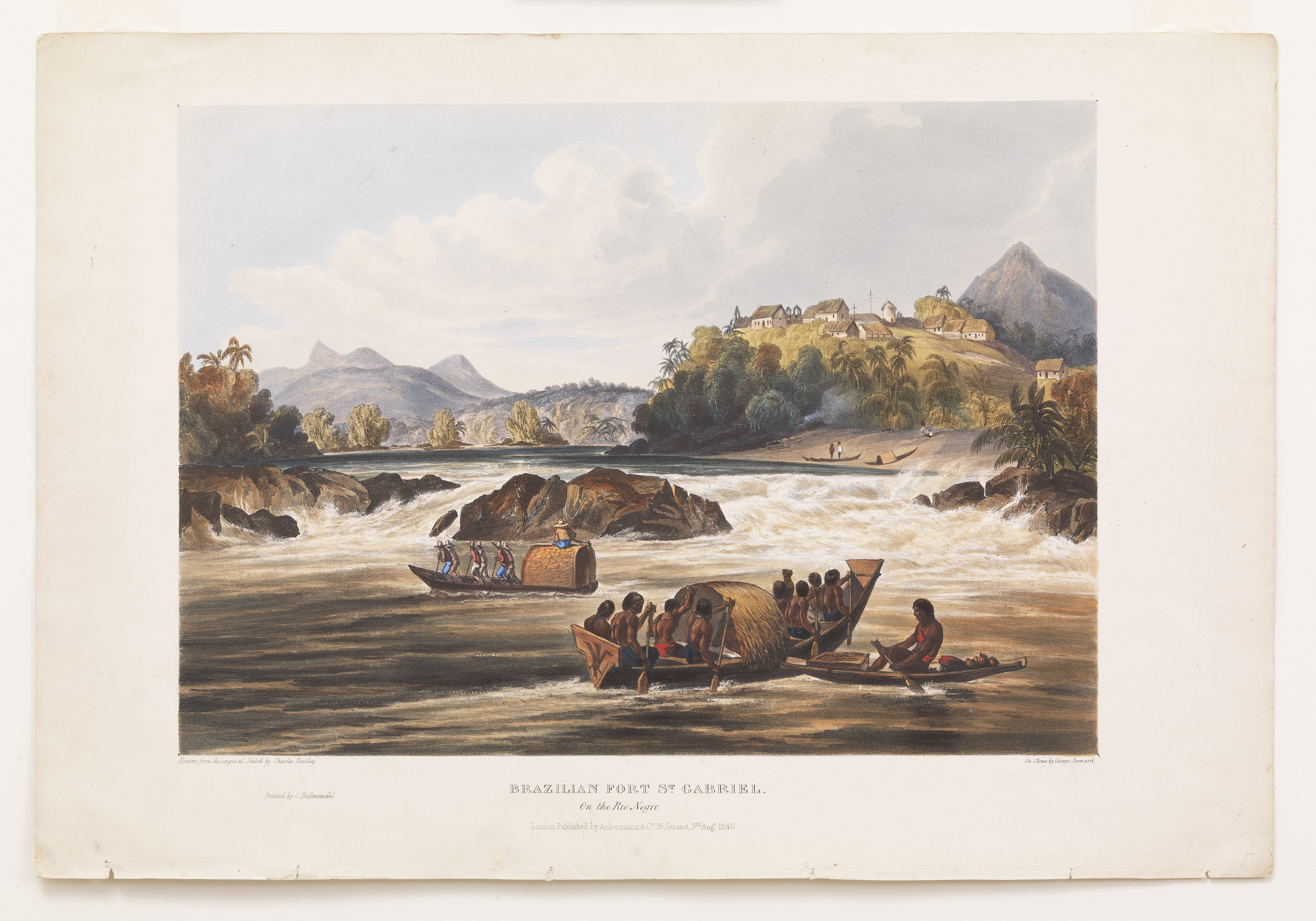
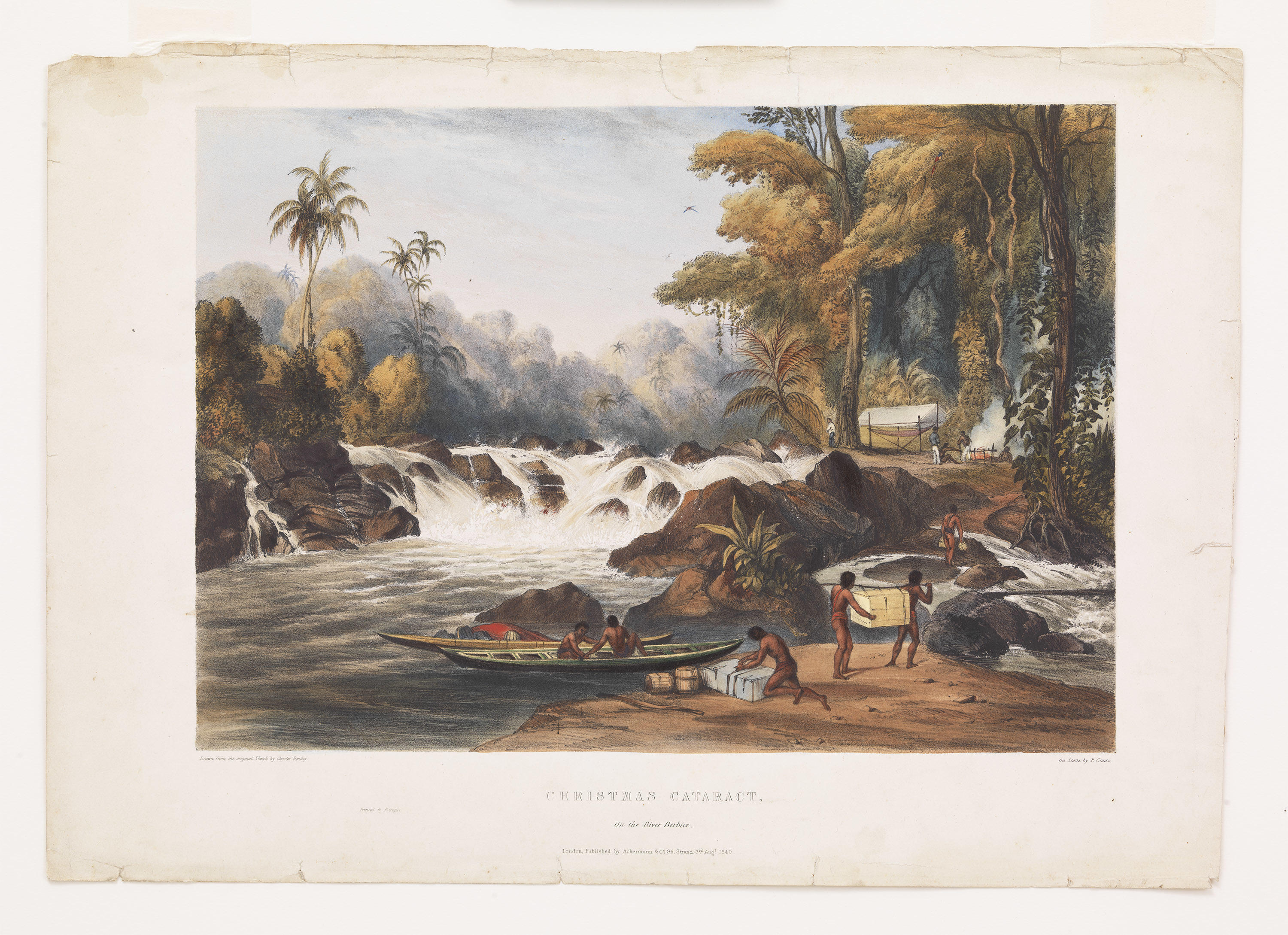
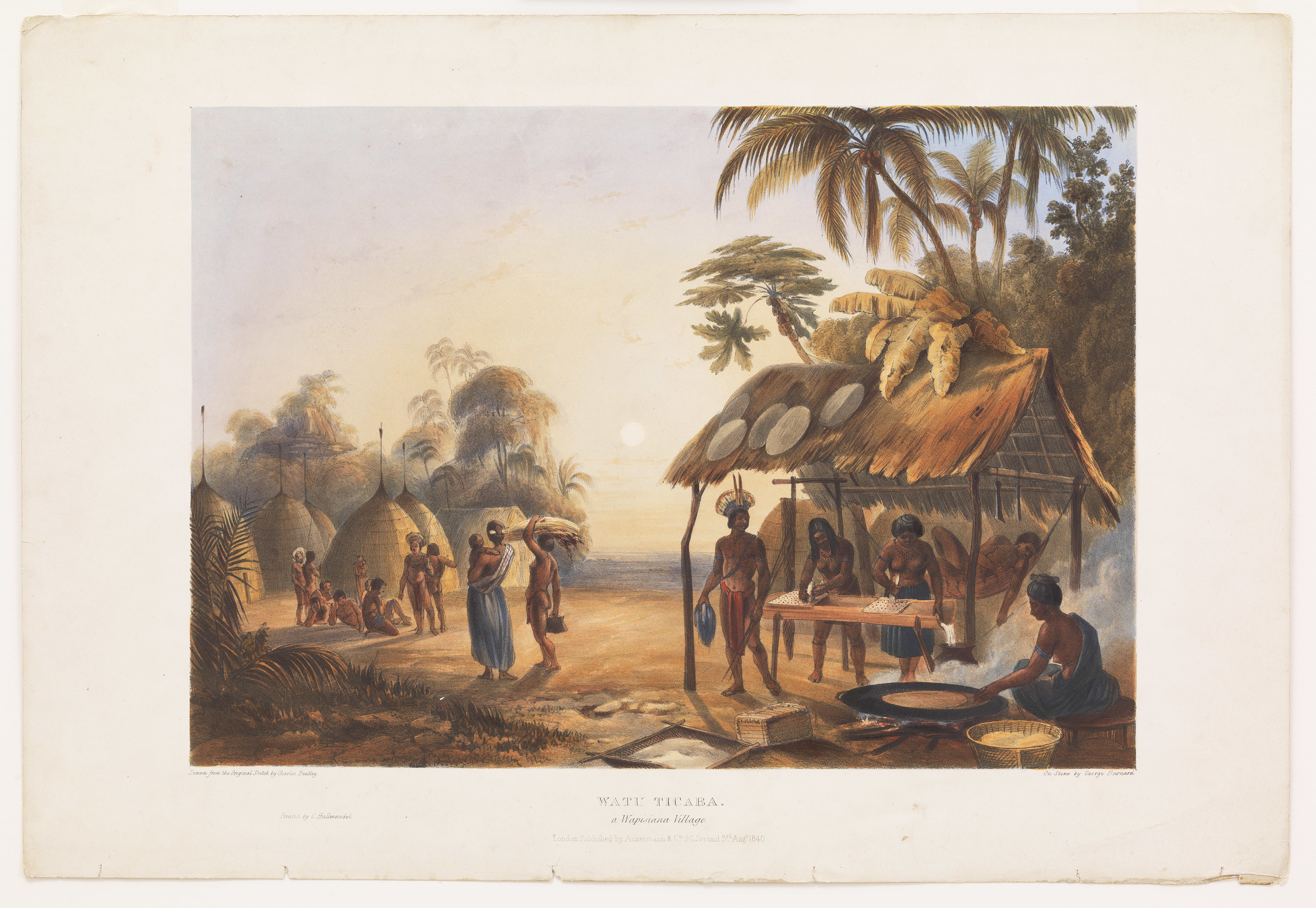
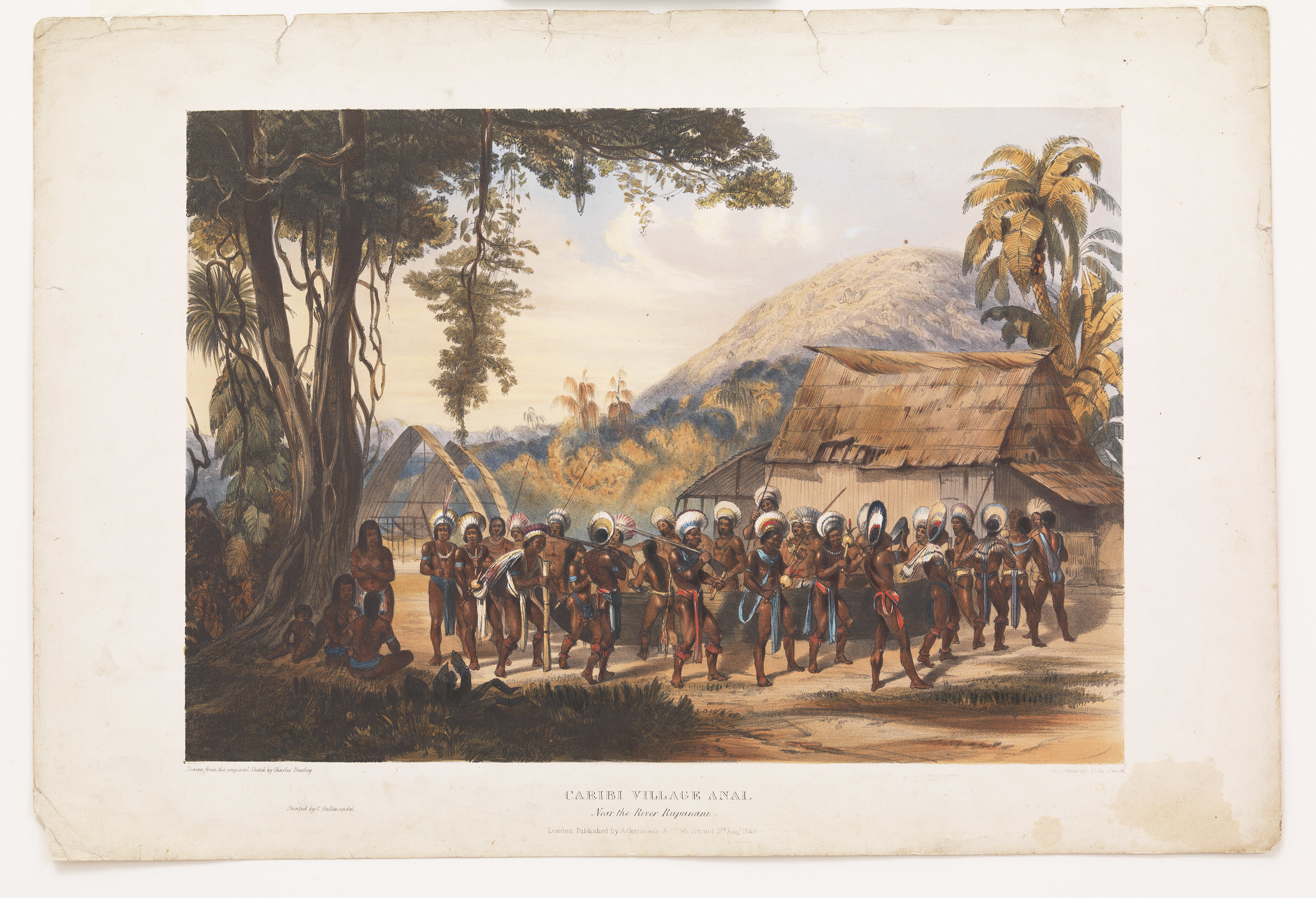
Charles Bentley (1806–1854), United Kingdom
Twelve Views in the Interior of Guiana [sic], 1840
Portfolio of twelve lithographs, edition 360
Colección Patricia Phelps de Cisneros
Two years after Guiana had been colonized by the British, the Royal Geographic Society in London hired Schomburgk to travel to the South American country to map its borders and study its people and environment. Twelve Views depicts locales on the route he traced along the border, which were sketched by an unnamed artist under Schomburgk’s direction and translated into lithographs by Charles Bentley in London. Collectors in the Americas and Europe purchased the portfolio by subscription. This audience would have appreciated the picturesque conventions according to which these landscapes were composed, with water, mountains, and plains framed and organized to lead the eye through the picture. They also would have been drawn to Schomburgk’s claim to have discovered the location of the mythical city, El Dorado, ruled by the golden king, which he pictured in the lithograph entitled Pirara and Lake Amucu. First described by sixteenth-century European adventurers, this myth continued to excite the popular imagination despite Prussian explorer Alexander von Humboldt’s (1769–1859) complete debunking of the story.
Depicting the customs of the Wapishana people was important to Schomburgk. Despite his colonialist mission, he was eager to protect this indigenous population against the Brazilian slave traders, whose incursion he lamented in the text accompanying Twelve Views. He was also interested in collecting botanical inspired the ribbed design of John Paxton’s iron-and-glass Crystal Palace for London’s Great Exhibition of 1851. Schomburgk, in the portfolio’s text, even imagines a scene of the Indians presenting their natural products to “their Queen, during whose reign, they, like the African races, look forward to that justice, which will tend to the amelioration of their forlorn situation.”